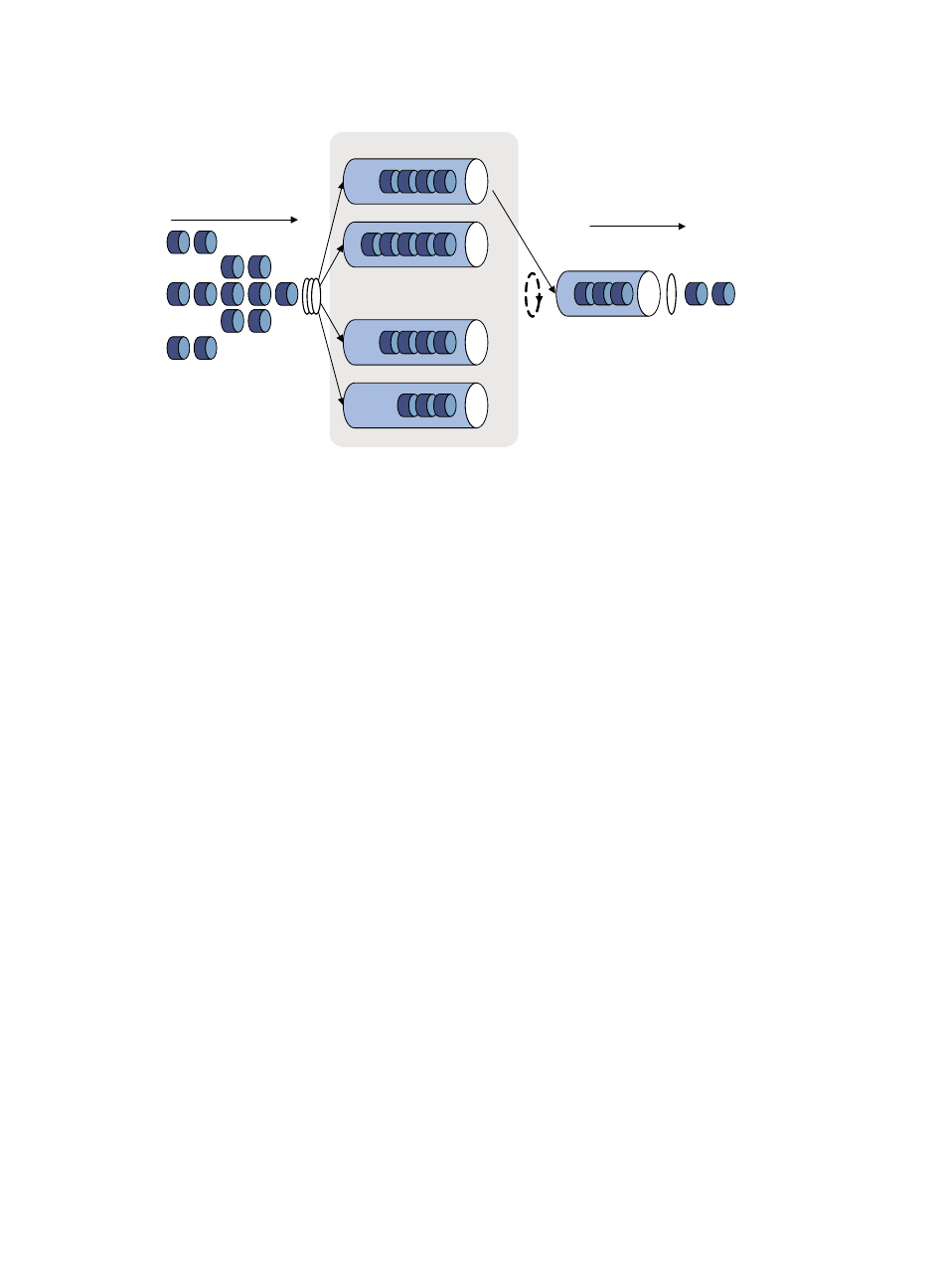H3C Technologies H3C S6300 Series Switches User Manual
Page 54

44
Figure 14 WRR queuing
Assume a port provides eight output queues. WRR assigns each queue a weight value (represented by
w7, w6, w5, w4, w3, w2, w1, or w0) to decide the proportion of resources assigned to the queue.
The switch implements the weight of a queue by scheduling a certain number of bytes (byte-count WRR)
or packets (packet-based WRR) for that queue. Take byte-count WRR as an example: On a 10-Gbps port,
you can configure the weight values of WRR queuing to 5, 5, 3, 3, 1, 1, 1, and 1 (corresponding to w7,
w6, w5, w4, w3, w2, w1, and w0, respectively). In this way, the queue with the lowest priority can get
a minimum of 500 Mbps of bandwidth. WRR solves the problem that SP queuing might fail to serve
packets in low-priority queues for a long time.
The switch supports WRR priority queue groups. You can assign the output queues to WRR priority queue
group 1 and WRR priority queue group 2. You can configure the weight for each queue and WRR
schedules queues in each group based on the weights in a round robin manner. WRR schedules the
traffic of group 1 and the traffic of group 2 in the ratio of 1:1.
Queue 0 Weight 1
……
Queue 1 Weight 2
Queue N-2 Weight N-1
Queue N-1 Weight N
Packets to be sent through
this port
Sent packets
Interface
Queue
scheduling
Sending queue
Packet
classification
- H3C S5820V2 Series Switches H3C S5830 Series Switches H3C S5830V2 Series Switches H3C S3600V2 Series Switches H3C S6800 Series Switches H3C S3100V2 Series Switches H3C S12500-X Series Switches H3C S5560 Series Switches H3C WX6000 Series Access Controllers H3C WX5000 Series Access Controllers H3C WX3000 Series Unified Switches H3C LSWM1WCM10 Access Controller Module H3C LSWM1WCM20 Access Controller Module H3C LSQM1WCMB0 Access Controller Module H3C LSRM1WCM2A1 Access Controller Module H3C LSBM1WCM2A0 Access Controller Module H3C S9800 Series Switches H3C S5130 Series Switches H3C S5120 Series Switches
